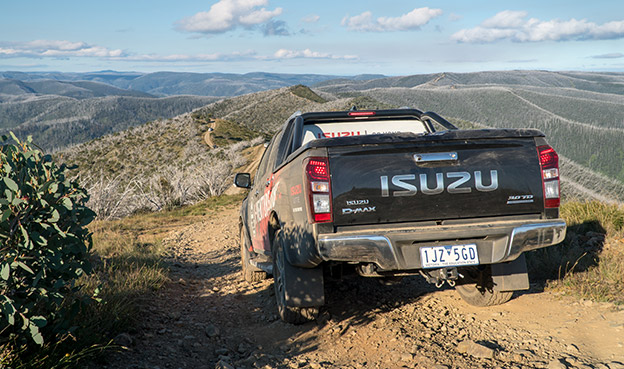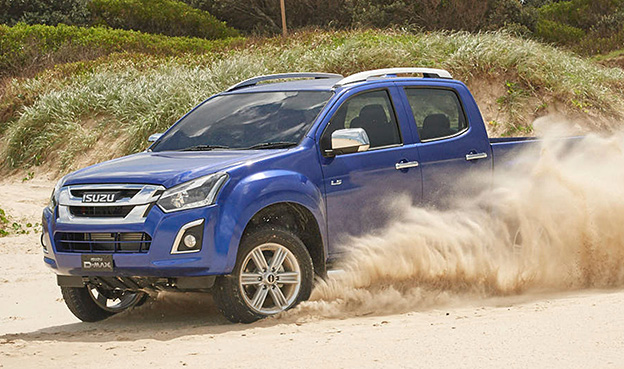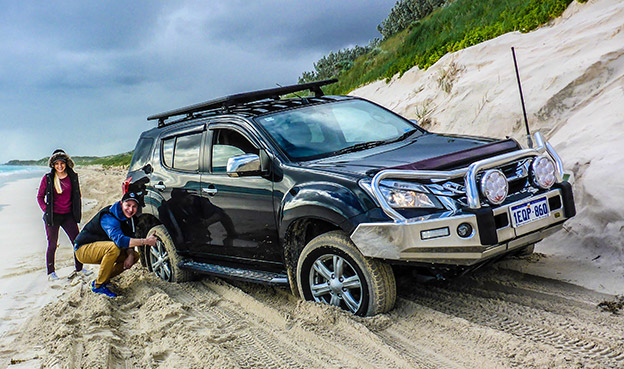

In our previous article we investigated a number of different self-retrieval methods for getting yourself out of a pickle. Just in case you’d forgotten, the number one preventative measure is always tyre pressure reduction. Do this and much of the potential drama you’ll encounter will likely be less significant and what I’m about to tell you might not even be part of your future exploits.
So with tyre pressure reduced you’re sailing along a beach nicely and you come across a less fortunate soul who has done a pretty good job of digging themselves in. It’s time to help out.
If you have no gear and all you can employ is cunning, get the tyre pressure gauge out first and make the necessary adjustments. Head straight for15psi/100kPa or lower and ask them to get their steering straight.
BEWARE ENTHUSIASTIC AMATEURS
Sometimes you’ll have another bunch of Good Samaritans on hand who’ll offer assistance in the form of a push. Nice thought, but it should be declined on two counts: 1) it’s unlikely to be successful because the grip the earth has on the vehicle will be greater than the force of a thousand able bodies, and 2) it’s dangerous!
In the heat of a retrieval safety considerations will be the first casualty. People just get caught up in the moment and do stupid stuff. A back injury as you’re straining against the weight of the vehicle is nothing—in a worse case, someone pushing from the side can disappear under a spinning wheel! Don’t do it.
Instead, clear all the spectators out of the way and get stuck into coaching the driver about using LOW range in either first or reverse (or both in rapid succession) and working with the gradient if there is one. With a gentle application of accelerator and maybe some rapid 45° leftright swings on the steering once there’s a hint of movement, the vehicle might just jump out of the hole (don’t forget to turn traction-control off).

BEACH WATER CROSSINGS
Staying with the beach theme, in places around the country where creeks make their way out to sea from an inland soak there’s another potential for disaster.
As the freshwater from inland pushes out across the beach it’ll carve a cleft in the sands. These ravines can be deep! A serious watercourse however will likely leave its channel all the way to the ocean in various degrees of depth and width.
Predicting when trouble is likely will be naturally linked to recent rainfall, a big dump hits the dune-fields, the moisture percolates through the sand into the aquifer beneath and hydraulics force it to the surface at a lower point or through a fissure in the bedrock. So if you’re venturing into a location for the first time, do some research on the internet and see if the location has this form of hazard and then you’re primed, ready for the challenge.
If the crossing has already had some action on it you can be reasonably secure in the knowledge it’s do-able, check the tracks in and out and maybe get out of the car and have a walk through if the water is approaching knee deep. What you’re looking for is a solid base and a flow that’s not knocking you off your feet.


Use of LOW range in situations like this might be advisable to bring control (a slower speed) and more torque to the table if things start getting a bit sluggish. I’m a second gear guy for work like this, not too low a gear to induce wheelspin, yet good enough to get going at a desirable pace if required.
If you’re the first to this crossing you may have noticed the edges of the stream have formed a gutter-like step in the trail. Once you’ve found where you’re going to cross you’ll be knocking the edge off that step and you want to know if you’ve got the clearance to do it. Remember the ramp-over angle (that’s the one measured between front and rear wheels to the lowest point in the middle of the vehicle) on utes isn’t as good as wagons, so if the deficit is too great you might end up stranded on your belly.
"IF YOU ARE ON THE RECEIVING END OF SOME 4WD-KINDNESS BE GRACIOUS, AND IN THE CASE OF A SERIOUS EVENT DON’T FORGET THE OLD BUSH LAW OF OFFERING SOMETHING FOR THEIR TROUBLES."
THINK ON YOUR FEET
I came across a bloke once on Kangaroo Island who’d come undone exiting an inland camping site via a trail that crossed an innocent-looking puddle. I don’t think it helped that his tyre pressures were still mid-20s, but down she went, with the rear half of the vehicle resting on the chassis, stranded in super-hydrated sand quagmire that a number of vehicles had forded during the day without drama.
He’d made a start with his retrieval by unloading the camping gear from the tray and making the truck lighter. I encouraged him to dump more tyre pressure as that always helps and 12psi/85kPa I deemed to be the go.
Now here’s the interesting part. As I was watching his attempt to drive out more and more moisture was coming to the surface, liquefying the sand and holding him hostage to the situation.
The solution was nearby.
A colleague and I got to work on the shovels, digging out as much of the sloppy stuff ahead of the rear wheels as we could manage, before shovelling heaps of dry sand in its place. The dry sand absorbed the immediate moisture. Our rear wheels just turning over at idle speed found the purchase necessary on our improvised ‘kittylitter’ to get some engagement and drive the vehicle out.
Sometimes lending a hand to a fellow traveller makes all the difference just because you can see from the outside. From the driver’s seat you can see where you want to go, but not necessarily the problem.

FOUR RULES TO LIVE BY
Keep these tips in mind when heading out on your next adventure.
These may seem obvious, but it’s surprising how many people disregard one element of what most of us would think of as common courtesy—if not all four.
- If you are on the receiving end of some 4WD-kindness be gracious and in the case of a serious event don’t forget the old bush law of offering something for their troubles. If you’ve got to rely on someone else and perhaps their gear too, it’s likely just cost you a carton—a pretty cheap get-out, really!
- At day’s end and you’ve successfully negotiated the trail and found a nice campsite and there’s a few other travellers scattered about, don’t make yourself a fool and park on top of one of them. There’s a reason they are spread out, so they can feel their own bit of serenity and get away from the hubbub of suburbia. I’ve had the ambience of brilliant campsites destroyed by interlopers overlapping my accommodation to the point where our guy-ropes are touching. There might be safety in numbers, but most of us need our space.
- If you’re planning on partying until the wee-small hours of the morning, get as far away from other campers as possible—and if it’s not possible, consider truncating your revelry. Boozy fireside 3am Khe Sahn singalongs can make enemies of even the hardiest Barnesy fan. Have some consideration for others.
- Four-wheel-driving is all about the experience, getting to that unique location and from time to time you’ll come across others doing the same thing. You’d like to think that if you lent someone a hand, they’d repay that debt if someone else was in trouble. Always set a good example so others learn from that behaviour.





